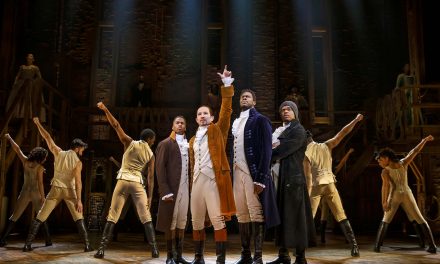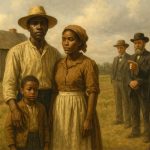
The editors of the Milwaukee Independent nominated the site where George Marshall Clark was lynched in 1861, at the northwest corner of Buffalo and Water streets, for designation as a historically significant landmark. The nomination is one of three finalists under consideration.
The Milwaukee County Historical Society is designated as the official agent of Milwaukee County to serve as an advisory body on landmarks. The purpose of landmarks is to list, record, protect, preserve, and enhance places, sites, areas, buildings, structures and other objects in the County of Milwaukee that have special character, special historical architectural, or cultural value.
The public was invited to nominate new properties to be considered for 2018 Milwaukee County Landmark status. The deadline ended on May 25, and since then a review board has inspected and evaluated the proposed sites, selecting three to review for this year.
Milwaukee County Landmarks Committee – Notice of Public Hearing
The Milwaukee County Landmarks Committee will hold a public hearing at 5:00 p.m. on Wednesday, August 8, at the Historical Society, 910 N. Old World 3rd Street. The subject of this hearing will be consideration of three sites nominated for designation as 2018 Milwaukee County Landmarks.
Persons interested in, or associated with, the potential landmarks may appear at the hearing to give testimony for or against the landmark designation. The sites are:
1) Woman’s Club of Wisconsin, 813 E. Kilbourn Avenue, being considered for historic and architectural significance.
2) North Milwaukee Village Hall, 5151 N. 35th Street, being considered for historic significance.
3) The site where George Marshall Clark was lynched in 1861, northwest corner of Buffalo and Water streets, being considered for historic significance.
While the 1854 capture of fugitive slave Joshua Glover and his escape from Milwaukee’s courthouse, assisted by members of the local community, is well documented and acknowledged with historical markers, the only lynching to take place in the city is mostly unknown.
Having reported on America’s Black Holocaust Museum in Bronzeville and the George Marshall Clark incident, the editorial board of the Milwaukee Independent felt that for the city to come to terms with its segregated condition, it was important to acknowledge uncomfortable historical truths.
- THE LYNCHING OF GEORGE MARSHALL CLARK IN MILWAUKEE
- MILWAUKEE NOTEBOOK: AN 1861 LYNCHING IN THE THIRD WARD
Clark’s death had a chilling effect on Milwaukee’s black community, and out of fear of the mob, many decided to leave. Public awareness of the incident is a step along the path of healing social trauma that continues to haunt residents of the Metropolitan area.
A landmark is any site or area, including any building, of particular historic, architectural or cultural significance to the County of Milwaukee. Designation as a Milwaukee County Landmark is intended to be primarily honorific and educational. Landmark status does not impose any restrictions upon the property or its owners.
To be considered as a finalist, nominations had to be of broad cultural, political, economic, or social history of the nation, state, or community; be identified with historic personages or with important events in national, state or local history; embody the distinguishing characteristics of an architectural type specimen inherently valuable for a study of a period style or method of construction; or be a notable work of a master builder, designer or architect whose individual genius influenced his time.
Sixteen lynchings took place in Wisconsin. Fortunately, George Clark’s lynching was the only such occurrence in Milwaukee’s history, but the entire tragic episode was more than a mob outburst.
“It reflected the political, economic and social divisions tearing the nation apart on Civil War battlefields. It was a microcosm of the violent undercurrents within America, as well as racial and ethnic tensions and the ambivalent attitudes about blacks and their place within American society.”
– Kevin Abing, PhD
© Photo
Lee Matz


















